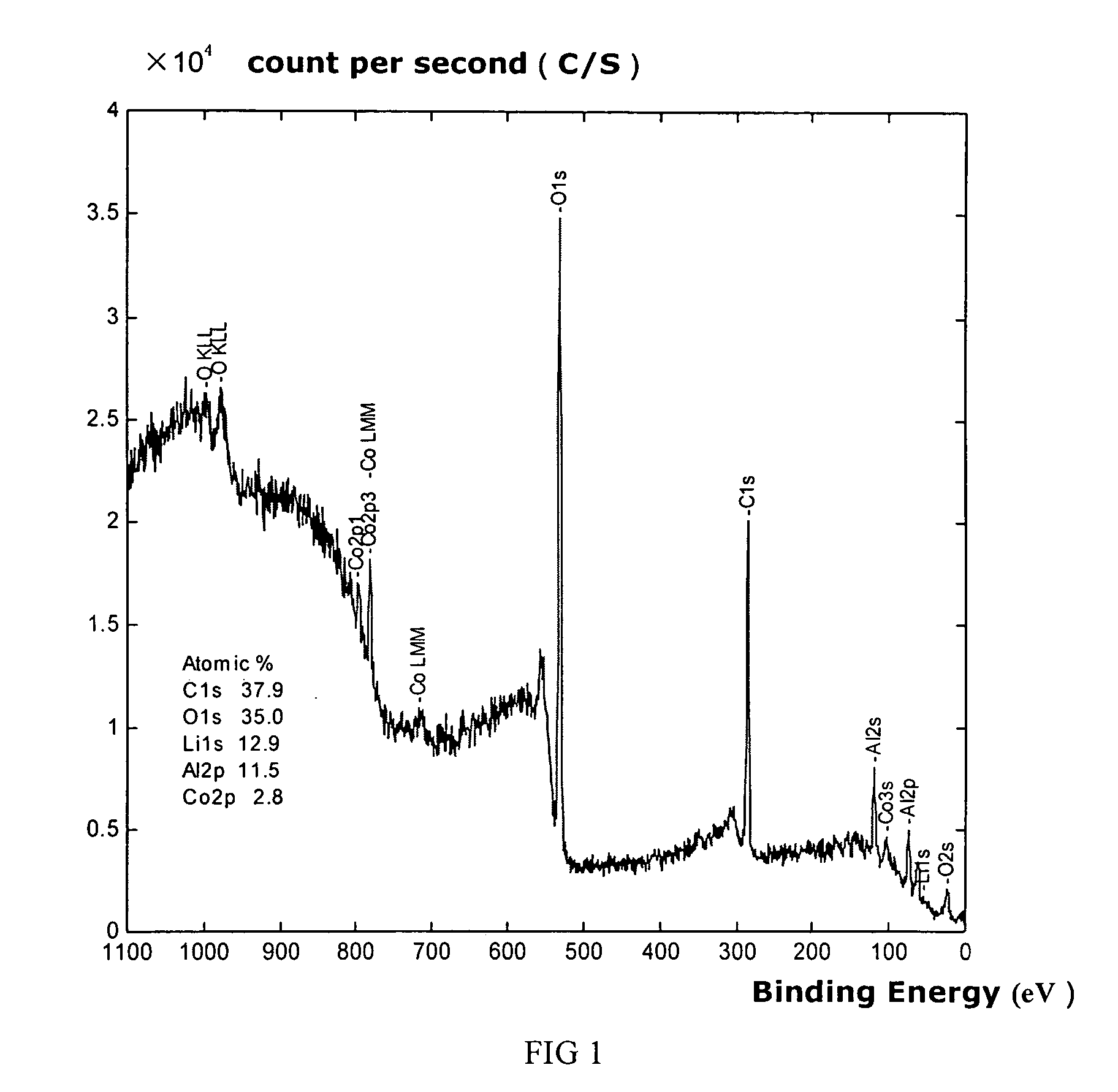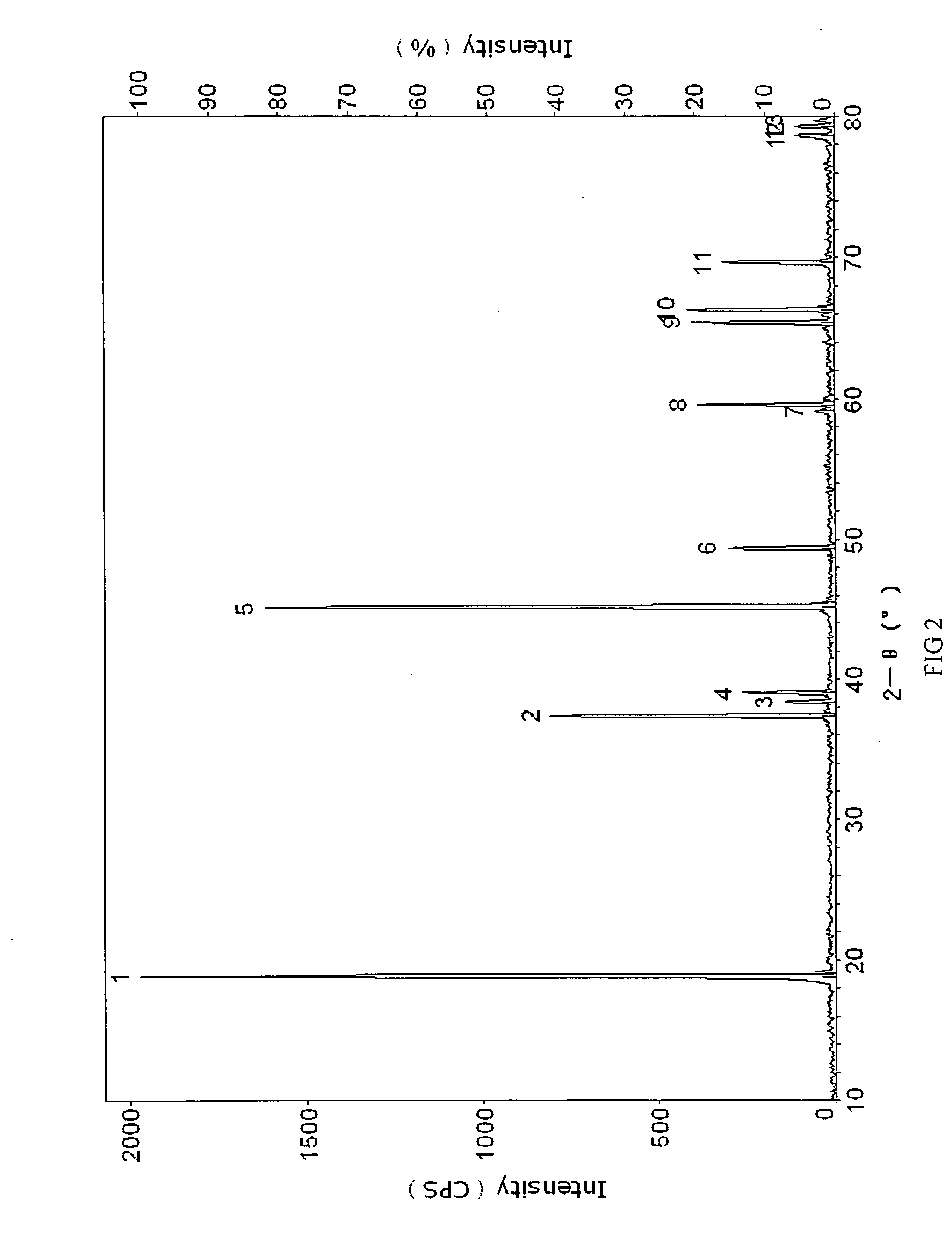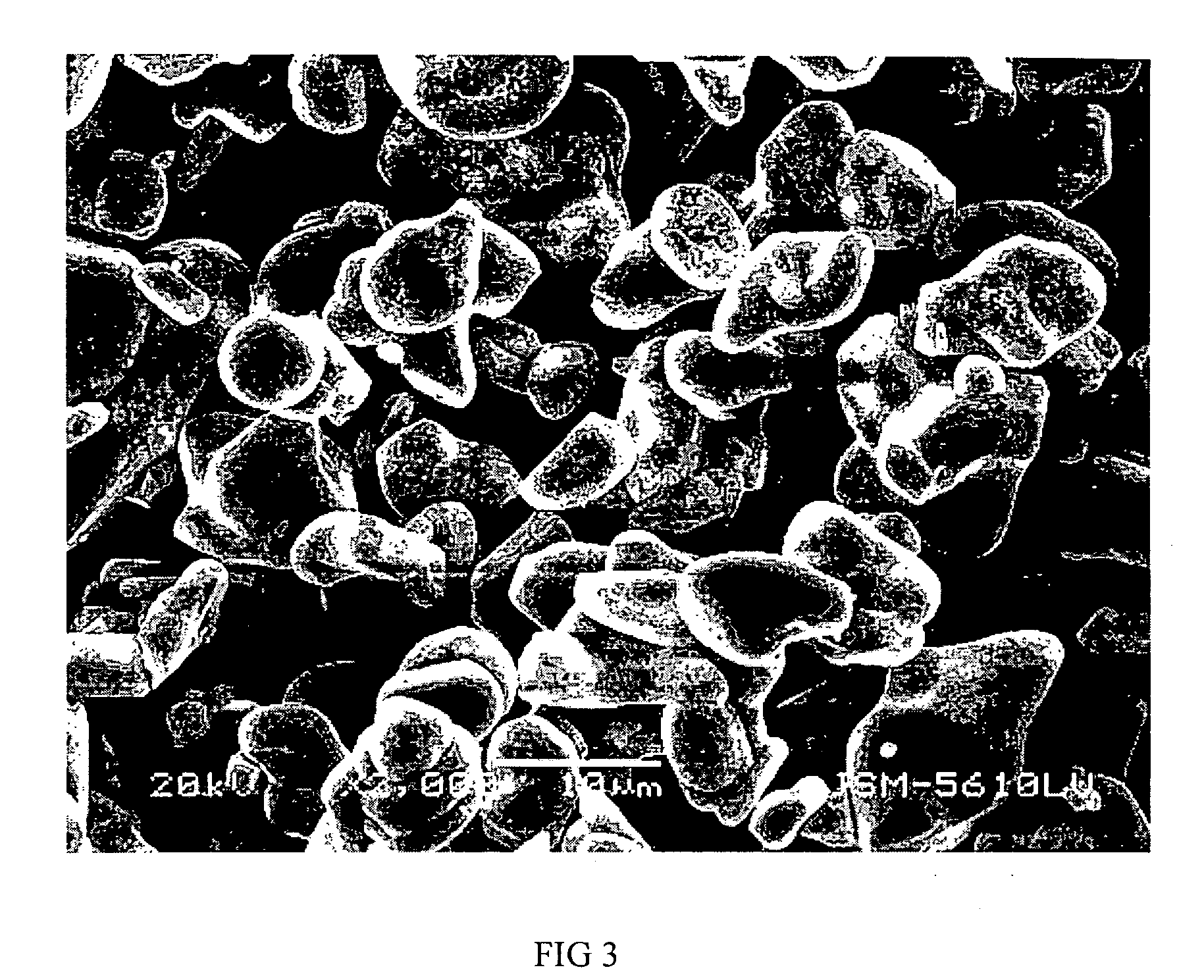Materials for positive electrodes of lithium ion batteries and their methods of fabrication
a technology of positive electrodes and materials, applied in the direction of nickel compounds, manganates/permanentates, cell components, etc., can solve the problems of increasing the power source requirements of portable electronic devices, increasing the complexity and size of electronic devices, and lowering the thermo-stability and safety of batteries. , to achieve the effect of excellent cycling, high temperature and high discharge ra
- Summary
- Abstract
- Description
- Claims
- Application Information
AI Technical Summary
Benefits of technology
Problems solved by technology
Method used
Image
Examples
embodiment 1
A. Fabrication of Materials for the Positive Electrodes:
[0040] Li2CO3 and CO3O4 are uniformly mixed where Li / Co is in the molar ratio of between 1:1 and 1.1. Said mixture is then heat treated at 900° C. for 10 hours to obtain lithium cobalt oxide with an average granule diameter of 10 microns to 12 microns.
[0041] Aluminum nitrate is used as the additive where the aluminum element in aluminum nitrate is 0.1 wt % of the lithium cobalt oxide. This additive is dissolved in anhydrous ethanol. Lithium cobalt oxide is then added to the lithium cobalt oxide in anhydrous ethanol and mixed uniformly. The solvent is evaporated and the resulting composite is heat treated at 800° C. for 4 hours to obtain the material for the positive electrodes of this embodiment.
B. Fabrication of Positive Electrode Slice:
[0042] 85 wt. % of the materials for positive electrodes that has been fabricated by the method described above, 10 wt % of graphite, the conducting agent, and 5 wt. % of PVDF (polyvinyli...
embodiment 2
[0046] In this embodiment, the weight of the aluminum element in aluminum nitrate is increased to 5 wt. % of the weight of lithium cobalt oxide. Except for this, all other fabrication methods and conditions remain the same as Embodiment 1.
embodiment 3
[0047] In this embodiment, the weight of the aluminum element in aluminum nitrate is increased to 10 wt. % of the weight of lithium cobalt oxide. Except for this, all other fabrication methods and conditions remain the same as Embodiment 1.
PUM
 Login to View More
Login to View More Abstract
Description
Claims
Application Information
 Login to View More
Login to View More - R&D
- Intellectual Property
- Life Sciences
- Materials
- Tech Scout
- Unparalleled Data Quality
- Higher Quality Content
- 60% Fewer Hallucinations
Browse by: Latest US Patents, China's latest patents, Technical Efficacy Thesaurus, Application Domain, Technology Topic, Popular Technical Reports.
© 2025 PatSnap. All rights reserved.Legal|Privacy policy|Modern Slavery Act Transparency Statement|Sitemap|About US| Contact US: help@patsnap.com



